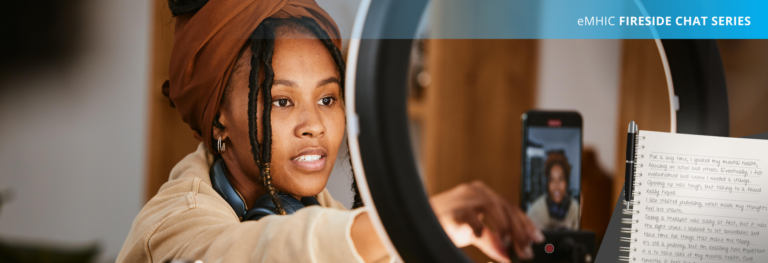You’ll have been hard pushed not to have heard the word “metaverse” over the past few months.
You may not be aware, however, of Big Tech’s increasing pursuance of the metaverse, as recently demonstrated by Facebook’s announcement of its new name Meta, or Unity’s (a global engine behind many 3D games) recent $1.63bn purchase of Weta Digital – the company behind Lord of the Rings 3D environments.
Before you stop reading, this article is not going to be a review of deep tech, but more a heads up that a future world of immersive technology and environments is going to fundamentally start affecting our real world and the people within it, on a level similar to the internet.
For those of you who may still be struggling to determine what the metaverse is, the Wikipedia definition is: “The metaverse (a portmanteau of “meta-” and “universe”) is a hypothesized iteration of the internet, supporting persistent online 3-D virtual environments through conventional personal computing, as well as virtual and augmented reality headsets. Metaverses, in some limited form, are already present on platforms like VRChat or video games like Second Life.”
That hopefully clears it up! So, what does it mean for mental health?
How I got into the virtual world
By way of introduction, I’m the CEO of a company called Rescape Innovation based in Wales in the UK. Our team are very proud of how we’re using immersive technologies to reduce pain and anxiety in health care, improving the lives and care experiences of both patients and staff across the NHS.
I’m not a doctor or a mental health practitioner, so why am I running a medtech business? It came about when I founded and ran a large media and creative agency, Orchard Media and Events Group, which started investing heavily from 2015 in virtual reality to assist our clients with training and communication.
In 2018 I attended a TedX talk where one of the speakers was Mark Taubert, the Head of Palliative Care at Velindre Cancer Hospital. I was amazed by his stimulating talk on the challenges of communication during palliative care, and I approached him afterwards to offer, pro-bono, the services of the media agency to see if we could use virtual reality to help him and his clinical team with some of those challenges.
We focused on the challenge to help communicate to patients who may be starting on a treatment journey that the MRI scan they had to go through, although not a pleasant experience, was not something to worry about. Mark and his team claimed it created extreme anxiety for some patients who had never experienced an MRI before – even to a stage with some where they didn’t turn up for their appointment. We set about finding a solution to that challenge.
Using a very specialised VR camera (that in effect captures a 360 degree video sphere), we recorded the journey a patient would take, from the moment they turned up at the hospital for their appointment, to ultimately meeting the technician and going through the scan. We then gave Mark and his team some VR headsets which allowed them to immerse patients into that journey, effectively giving them the experience of what’s it like to go through an MRI scan. As we all know, generally when you’ve been through something once, unless it was atrocious first time, it’s less terrifying second time around.
When we discussed the feedback with Mark, it became apparent that putting these extremely anxious people into the world of virtual reality resulted in a relaxation of their body, their shoulders dropped and their breathing became more regulated.
Using VR to reduce pain
We were fascinated that by be placing someone inside a virtual world (a space in a future metaverse), we could change both their physiological and mental state. Hence when we started researching this, we realised we were far from the first people to discover this, with research going back some 20 years showing that virtual reality was not only able to reduce anxiety, but also reduce pain.
There’s a great deal of existing research to investigate on this. We’re aware of 40 new studies that have come out in the past 18 months alone. For those looking to explore more, a good place to start is the work of Hunter Hoffman, arguably the pioneer in this space:
So, if we can reduce pain and anxiety in a non-pharmaceutical, non-addictive, safe, with minimum side effects way, why is this not being used across healthcare? There have been various challenges around this – from new technology to poor WiFi in hospitals to decontamination issues. However, mainly it’s just a slow adoption of new technology within health that’s holding it back. The logistical challenges have now been pretty much overcome.
Virtual Reality in Critical Care: A Feasibility Study. © Video courtesy of Rescape Innovation.
DR.VR®
We’re proud at Rescape to have been the first UK company to achieve Class 1 Medical Device status for a VR solution aimed specifically at targeting pain and anxiety. Named DR.VR®, this solution now has an adult version, a paediatric version, and in response to COVID we created a DR.VR frontline version, which is now being used by health board staff welling teams as another tool to help their colleagues who may be suffering with their own mental health, particularly after the pandemic. DR.VR® is now being used across the UK in the NHS, care homes and hospices.
So where is this technology now going beyond pain and anxiety? I was recently on a call with a mental health team in North Wales who had a lady in their care who had constant voices in her head. They had allowed her to use the DR.VR® and spend time in one of the many immersive environments on our system, enabling her to visit some of the world’s most beautiful beaches. The lady said this was the only time the voices in her head stopped.
Existing technology allows us to transport people into virtually any environment within today’s “metaverse”. For a mental health practitioner, this is, I believe, an amazing opportunity, helping to deal with everything from PTSD to phobias and wellbeing. Opportunities are also emerging to change hearts and minds through the ability to experience empathy in VR. Mel Slater’s work in Barcelona is a great example of this:
https://www.nature.com/articles/s41598-019-46877-3.
Using VR for training
This ability to help understand what it’s like to stand in someone else’s shoes has led to our DR.VR platform being used to deliver training. Empathy examples include teaching Prison Custodial Guards what it’s like to be a prisoner, and how the officer’s positive actions can de-escalate situations to avoid physical interventions – something ultimately good for both prisoner and guard; and teaching clinicians what it’s like being a hospital patient with a tracheostomy, how it feels when there is an emergency with the tracheostomy, and how the care staff’s actions make you feel.
As this technology progresses and is accelerated through Big Tech investment and combined with taking out biometric data, back into feedback loops, machine learning, haptic feedback, and AI driven virtual chatbots, the opportunities become endless.
As we step further into this world, which at times may feel somewhat dystopian, it’s critical we understand the psychological impacts on people when we put them in these environments, which the brain perceives as real, and ensure the outputs are good.
We’ve seen recently with Big Tech controlling social media and communication platforms that the negative mental health impact to users is a very real thing. With immersive technologies coming at us now, mental health practitioners have an exciting opportunity to ensure that at least a corner of the future metaverse is underpinned with a ‘techforgood’ objective, and delivers positive mental outcomes for those who reside in it.





